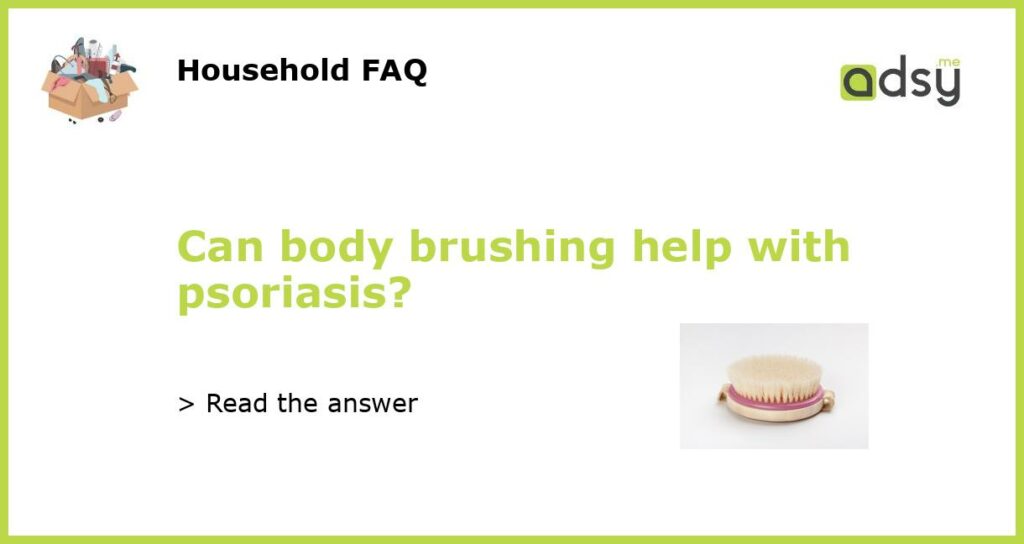Understanding Psoriasis and Its Symptoms
Psoriasis is a chronic and autoimmune disease that causes skin cells to grow rapidly, resulting in thick, scaly, and patchy areas of skin. It can be found on any part of the body and can also affect the scalp, nails, and joints. Common symptoms include red or pink patches covered with silver scales, dry and cracked skin, itching, burning, and soreness.
The Science Behind Body Brushing
Body brushing is a popular method that involves using a special brush to gently scrub the skin in a circular motion to stimulate blood flow, exfoliate dead cells, and promote lymphatic drainage. It is believed to have various benefits for the skin, including improving its texture, reducing cellulite, and removing toxins.
Can Body Brushing Help with Psoriasis?
While body brushing may have some benefits on the skin, there is no conclusive evidence that it can help with psoriasis. According to the National Psoriasis Foundation, there is no cure for psoriasis and its treatment depends on the severity of the condition. It is typically managed with topical creams, light therapy, medications, and lifestyle changes such as avoiding triggers that worsen symptoms.
Alternative Treatments for Psoriasis
It is important to note that body brushing should not be used as a substitute for medical treatment for psoriasis. However, there are some alternative treatments that have shown promise in managing psoriasis symptoms. These include natural remedies such as aloe vera, tea tree oil, and oatmeal baths, as well as lifestyle changes such as stress reduction, a healthy diet, and regular exercise.
Although body brushing may have some general benefits for the skin, it is not a recommended treatment for psoriasis. Psoriasis is a complex and chronic condition that requires medical attention and proper management. If you have psoriasis, it is important to speak to your healthcare provider about the best treatment options for you and to avoid using unproven remedies that can potentially worsen symptoms.






